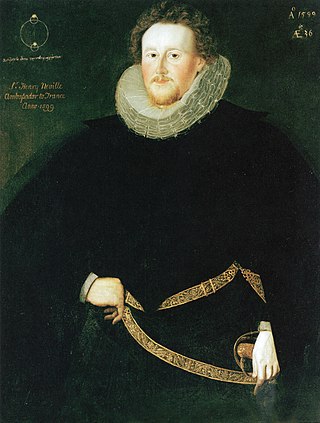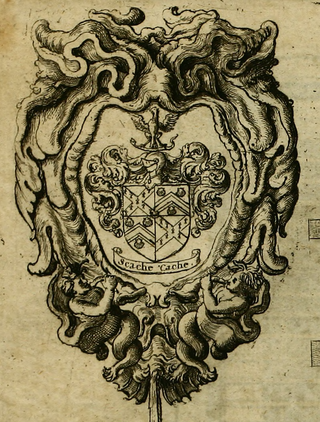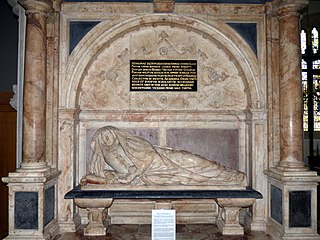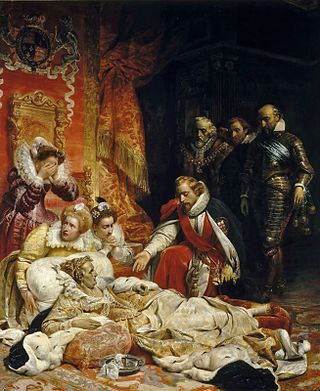Sir Robert Bell SL of Beaupré Hall, Norfolk, was a Speaker of the House of Commons (1572–1576), who served during the reign of Queen Elizabeth I.
Andrew Windsor, 1st Baron WindsorKB (1467–1543), was a Member of Parliament, English peer, and Keeper of the Wardrobe, knight banneret and military commander.
Charles Neville, 6th Earl of Westmorland was an English nobleman and one of the leaders of the Rising of the North in 1569.

Sir Henry Neville was an English courtier, politician and diplomat, noted for his role as ambassador to France and his unsuccessful attempts to negotiate between James I of England and the Houses of Parliament. In 2005, Neville was put forward as a candidate for the authorship of Shakespeare's works.
Sir Henry Neville of Billingbear House, Berkshire, was a Gentleman of the Privy Chamber to King Henry VIII.
Grey Neville of Billingbear, Berkshire was an English landowner and politician who sat in the English House of Commons from 1705 to 1708 and in the British House of Commons between 1708 and 1723.
Walter Haddon LL.D. (1515–1572) was an English civil lawyer, much involved in church and university affairs under Edward VI, Queen Mary, and Elizabeth I. He was a University of Cambridge humanist and reformer, and was highly reputed in his time as a Latinist. He sat as an MP during the reigns of Mary and Elizabeth. His controversial exchange with the Portuguese historian Jerónimo Osório attracted international attention partly on account of the scholarly reputations of the protagonists.

Richard Neville DL served in the English Civil War as a Royalist. He came to prominence as commander at the First Battle of Newbury in 1643 when he commanded the Royalist troops.

Henry Grey was a British Whig politician who sat in the House of Commons between 1709 and 1740.
Richard Neville of Billingbear, Berkshire, was an English Whig politician, who sat in the English and British House of Commons from 1695 to 1710.

Samuel Backhouse was an English merchant who later became a country gentleman based in the county of Berkshire. He was a member of Parliament (MP) twice early in James I's reign, first for New Windsor in 1604 and then for Aylesbury in 1614.

Elizabeth Bacon was an English aristocrat. She is presumed to have been the Lady Neville of My Ladye Nevells Booke, an important manuscript of keyboard music by William Byrd, which was compiled in 1591. She was the daughter of Queen Elizabeth's Lord Keeper of the Great Seal, Sir Nicholas Bacon, by his first wife, Jane Ferneley. She was, successively, the wife of Sir Robert D'Oylie, the courtier Sir Henry Neville, and the judge Sir William Peryam.

The succession to the childless Elizabeth I was an open question from her accession in 1558 to her death in 1603, when the crown passed to James VI of Scotland. While the accession of James went smoothly, the succession had been the subject of much debate for decades. It also, in some scholarly views, was a major political factor of the entire reign, if not so voiced. Separate aspects have acquired their own nomenclature: the "Norfolk conspiracy", Patrick Collinson's "Elizabethan exclusion crisis", and the "Secret Correspondence".

Richard Griffin, 2nd Baron Braybrooke was an English politician and peer. He was known as Richard Aldworth-Neville or Richard Aldworth Griffin-Neville to 1797.

The 8th Parliament of Queen Elizabeth I was summoned by Queen Elizabeth I of England on 4 January 1593 and assembled on 19 February following. Edward Coke, the Solicitor-general and Member of Parliament (MP) for Norfolk, was appointed speaker of the commons. At the state opening of Parliament the Lord Keeper Sir John Puckering informed the house that the reasons for summoning the Parliament were the threat of Spanish invasion and the Queen's "extraordinarye and most excessive expenses". This parliament occurred in the context of an ongoing Spanish-English conflict. At the time parliament was called, the Spanish and English were in the midst of ongoing strife that began decades prior and threatened the prosperity of England. Although relations between Spain and England at the start of Elizabeth’s reign began in a largely cordial manner, the two countries came into conflict over their investments in the Americas along with religious differences; Spain was a Catholic nation while England was a largely Protestant nation. Philip II of Spain was in frequent competition with Elizabeth for influence and resources in the New World and sought to weaken England’s sway in the region. In 1582 Philip began preparing a fleet to invade England, the Spanish Armada. Three years later in 1585, Elizabeth and her government feared Philip’s growing power as his empire came “dangerously near to total supremacy in Western Europe,” which threatened the stability of Elizabeth’s rule. By 1588 the Spanish Armada had been successfully prepared for battle and began an invasion of England led by the duke of Medina Sidonia who sailed with 130 ships carrying 29,453 men in total. Their goal: overthrow Elizabeth. Ultimately, the Spanish Armada failed to defeat the British in battle and take Elizabeth’s crown, but it served as a stark reminder to England that the country was not safe from a Spanish threat. This matter of urgency was a major topic of discussion during the 8th Parliament.

The 1st Parliament of Queen Elizabeth I was ruled over by Queen Elizabeth I of England on 5 December 1558 and assembled on 23 January 1559. This Parliament would restore many of the laws created by Henry VIII and the English Reformation Parliament. Queen Elizabeth's 1st Parliament passed some 24 public statutes and 17 private measures by the time it was dissolved on 8 May 1559.

The 4th Parliament of Queen Elizabeth I was summoned by Queen Elizabeth I of England on 28 March 1572 and assembled on 8 May 1572.

The 5th Parliament of Queen Elizabeth I was summoned by Queen Elizabeth I of England on 12 October 1584 and assembled on 23 November 1584. The size of the House of Commons had by now increased further to 460 members, compared with only 402 in her first Parliament of 1558/9.

The 7th Parliament of Queen Elizabeth I was summoned by Queen Elizabeth I of England on 18 September 1588 and assembled on 4 February 1589.









